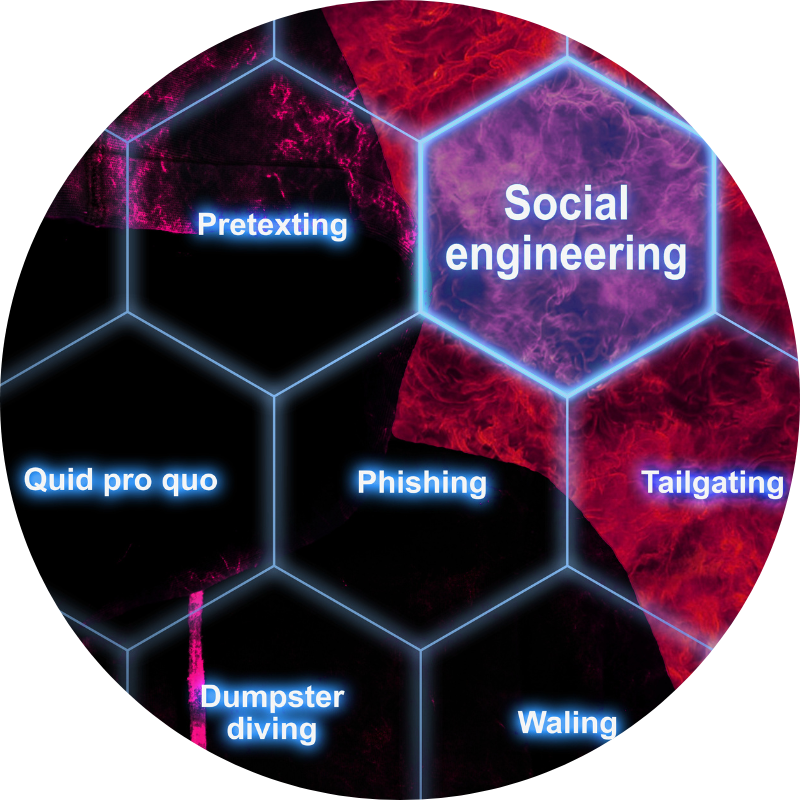
Decoding Social Engineering: Protecting Yourself Against Manipulative Tactics
In the realm of cybersecurity, not all threats come in the form of viruses or malware. Some of the most dangerous attacks target human psychology rather than technology. These attacks, known as social engineering, rely on manipulation and deceit to trick individuals into divulging sensitive information or performing actions that compromise security.
In this blog, we’ll decode social engineering, explore common tactics used by attackers, and offer practical tips on how to protect yourself and your business from these manipulative strategies.
- What is Social Engineering?
Social engineering is the art of manipulating people into giving up confidential information or performing actions that benefit the attacker. Unlike other cyber threats that exploit technical vulnerabilities, social engineering targets the human element, exploiting trust, fear, or urgency to achieve its goals. These attacks can be highly effective because they play on emotions, instincts, and social norms.
Common Goals of Social Engineering:
- Gaining Access: Attackers may use social engineering to gain access to systems, networks, or physical locations.
- Stealing Information: Sensitive information, such as passwords, financial details, or proprietary data, is often the target.
- Spreading Malware: Social engineering can be used to trick individuals into downloading malicious software that can compromise an entire network.
- Common Social Engineering Tactics
Social engineers use a variety of tactics to manipulate their targets. Understanding these tactics is the first step in defending against them. Here are some of the most common methods:
Phishing:
- What It Is: Phishing involves sending deceptive emails or messages that appear to be from a legitimate source, such as a bank, colleague, or service provider. The goal is to trick the recipient into clicking on a malicious link, downloading an attachment, or providing sensitive information.
- How to Spot It: Be wary of unsolicited emails that create a sense of urgency, ask for personal information, or contain suspicious links. Always verify the sender’s identity before taking any action.
Pretexting:
- What It Is: Pretexting occurs when an attacker creates a fabricated scenario or pretext to obtain information. This could involve impersonating someone in a position of authority, such as a company executive or IT support personnel, to gain trust and elicit sensitive information.
- How to Spot It: Verify the identity of anyone requesting sensitive information, especially if the request seems unusual or comes out of the blue. Don’t be afraid to ask questions or confirm the request through a known, trusted channel.
Baiting:
- What It Is: Baiting involves offering something enticing, such as free software, a gift card, or exclusive access, to lure the target into providing information or downloading malicious software.
- How to Spot It: If an offer seems too good to be true, it probably is. Avoid downloading software or clicking on links from unverified sources, and be skeptical of unsolicited offers or gifts.
Tailgating (Piggybacking):
- What It Is: Tailgating occurs when an attacker gains physical access to a secure area by following closely behind an authorized person. This can happen in a workplace setting when an attacker, posing as an employee or contractor, takes advantage of someone’s politeness to enter a restricted area.
- How to Spot It: Always be cautious about allowing others to enter secure areas with you. Verify their identity and purpose before granting access.
Quid Pro Quo:
- What It Is: In a quid pro quo attack, the attacker promises a benefit in exchange for information or access. For example, they may pose as tech support and offer to help with a problem in exchange for login credentials.
- How to Spot It: Be skeptical of unsolicited offers of help, especially if they require you to provide sensitive information or access to your systems.
- How to Protect Yourself Against Social Engineering
Defending against social engineering requires a combination of awareness, skepticism, and proactive security measures. Here’s how you can protect yourself and your organization:
Be Skeptical:
- Always question the legitimacy of unsolicited requests for information, especially if they come from unknown sources or create a sense of urgency.
- Don’t assume that someone is who they say they are just because they have some information about you or your organization.
Verify Requests:
- Double-check any request for sensitive information or access, even if it appears to come from a trusted source. Use known, verified contact information to confirm the request.
- Encourage a culture of verification within your organization, where employees feel comfortable confirming requests with their colleagues.
Educate Employees:
- Regularly train employees on the dangers of social engineering and how to recognize common tactics. Make sure they understand the importance of not sharing sensitive information without proper verification.
- Conduct simulated phishing exercises to test employees’ awareness and response to potential attacks.
Use Multi-Factor Authentication (MFA):
- Implement MFA for all sensitive accounts and systems. This adds an additional layer of security, making it harder for attackers to gain access even if they obtain login credentials.
Limit Information Sharing:
- Be mindful of the information you share publicly, both online and offline. Social engineers often use publicly available information to craft more convincing attacks.
- Restrict the amount of sensitive information that is accessible to employees, ensuring that only those who need access have it.
Monitor and Report Suspicious Activity:
- Encourage employees to report any suspicious activity or requests immediately. Early detection can prevent a potential breach.
- Regularly monitor network activity for signs of unauthorized access or data exfiltration.
- What to Do if You Fall Victim to Social Engineering
Despite your best efforts, it’s possible to fall victim to a social engineering attack. If this happens, quick action can help mitigate the damage:
Steps to Take:
- Change Passwords: Immediately change any passwords that may have been compromised, and ensure that MFA is enabled on all accounts.
- Notify Your IT Team: Report the incident to your IT team or security provider so they can take steps to secure your systems and investigate the breach.
- Monitor for Further Activity: Keep an eye on your accounts and systems for any signs of unauthorized activity and report any suspicious behavior immediately.
Social engineering is a potent threat that preys on human psychology rather than technical vulnerabilities. By staying informed, practicing skepticism, and fostering a culture of security awareness, you can protect yourself and your organization from these manipulative tactics. Remember, in the battle against cyber threats, knowledge is your best defense.
If you need assistance in bolstering your organization’s defenses against social engineering and other cyber threats, our team is here to help. Contact us today to learn more about our payroll and HR solutions that prioritize your security and peace of mind.
For more information about our services, please contact us at 888.632.2940.
*Payentry, an MPAY Company (Company), is not a law firm. This article is intended for informational purposes only and should not be relied upon in reaching a conclusion in a particular area of law. Applicability of the legal principles discussed may differ substantially in individual situations. Receipt of this or any other Company materials does not create an attorney-client relationship. The Company is not responsible for any inadvertent errors that may occur in the publishing process.

